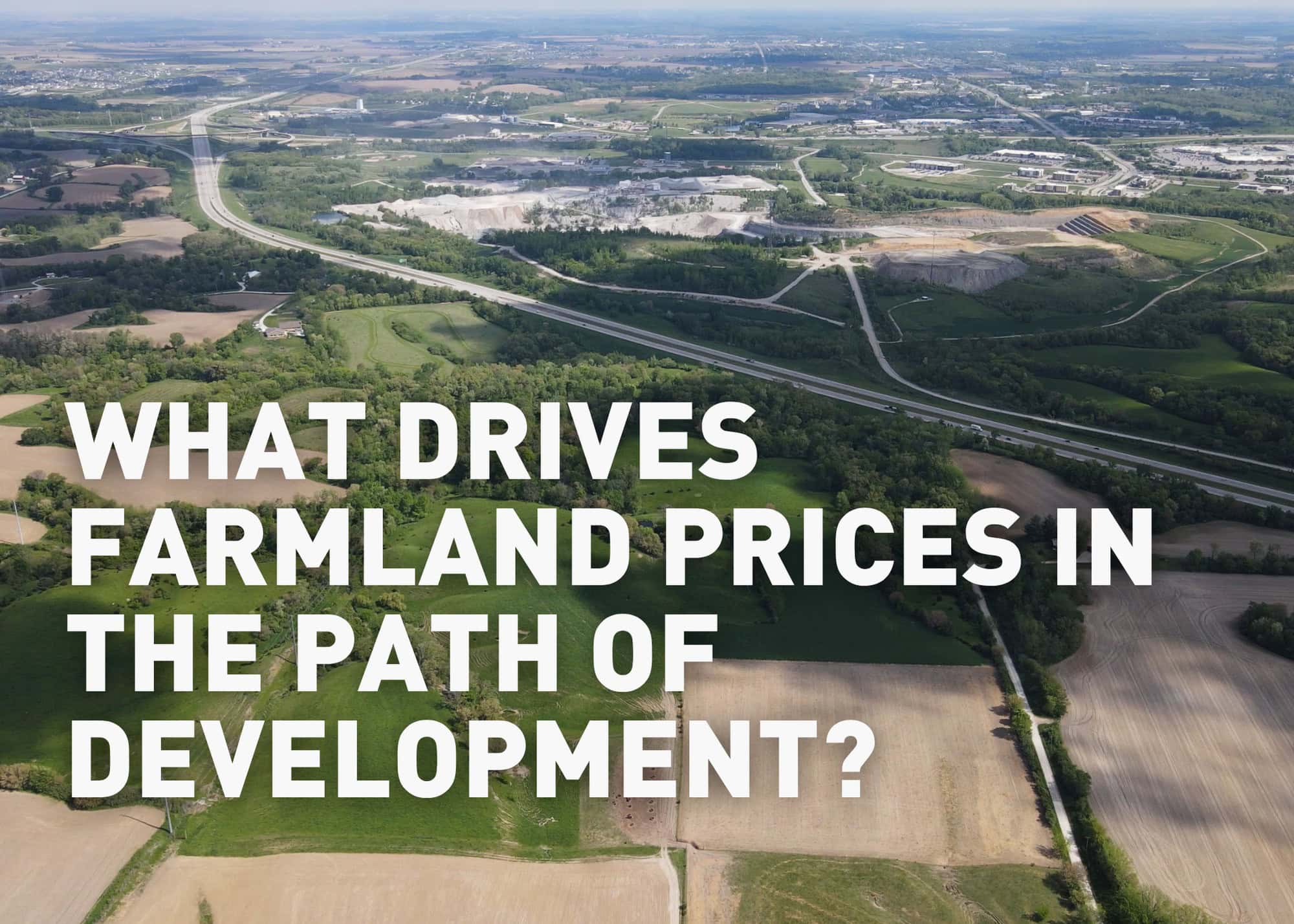Unlocking Hidden Value: What Drives Farmland Prices in the Path of Development in Eastern Iowa
 Matt Tobin
Matt Tobin
Iowa Land Specialist
As a real estate agent specializing in Eastern Iowa, one of the most dynamic segments of the land market I work with is farmland located in the path of development. These properties are unique — they’re not just valued for their crop yields but for their potential. With the right combination of location and infrastructure, farmland can leap in value well beyond traditional ag prices. So, what drives farmland prices in the path of development? Here’s what smart investors, developers, and landowners should consider when evaluating the true worth of farmland in Eastern Iowa that sits in the path of urban growth.
Annexation Potential & Proximity to a Municipality
One of the first questions we ask is: Can this farm be annexed into a nearby city? If so, that opens the door to city services, zoning changes, and development incentives. Proximity to a growing municipality like Cedar Rapids, Iowa City, Coralville, Dubuque, Waterloo or Marion can drastically shift a property’s profile from ag, to future commercial, industrial, or residential development.
Infrastructure Access: Roads, Water, Sewer, Electric
A property’s proximity to existing infrastructure is a key driver of value. Developers look closely at access to:
- Paved roads and highways (especially 4-lane roads for truck access)
- City water and sewer lines
- Electric and gas service
The closer the property is to existing utility networks, the lower the initial development costs—and the higher the land value. Farms located just outside city limits but within reach of infrastructure are often primed for annexation and development.
Municipal Incentives & Support
Many Eastern Iowa cities offer tax increment financing (TIF), abatements, or even public investment in infrastructure to attract development. If a city is willing to run water or sewer to a site, that can easily add thousands per acre in value. Don’t overlook how supportive (or not) a municipality is in terms of zoning changes and permitting timelines—speed matters to developers.
Energy Infrastructure: Substations & Renewable Potential
With the increasing interest in solar and wind energy, proximity to a substation or major transmission line can make a piece of land attractive not just for traditional development but for renewable energy contracts. These deals offer long-term revenue and can compete with or exceed returns from typical development or farming.
Topography & Site Prep Costs
Is the land relatively flat and well-drained? That’s a huge plus. Developers want land that can be made “pad-ready” with minimal grading or dirt work. Rolling or uneven terrain may still be usable, but the cost to prepare the site can reduce the value a buyer is willing to pay.
Traffic Counts, Visibility & Access
If the property sits on a high-traffic road, that’s valuable visibility for commercial or mixed-use development. Even more important is accessibility — can semis and large equipment safely enter and exit the property? Farms with frontage on or near a major 4-lane highway (like I-80, US 20 or US 30) typically see higher interest from industrial and logistics companies.
Rail Access
If the land has railroad frontage, and especially if it can support a private rail spur, its value for industrial development skyrockets. Rail-connected properties are in demand for warehousing, grain operations, and manufacturers who ship raw materials in or out.
Wrapping Up
In Eastern Iowa, farmland located in the path of development is more than just rows of corn and soybeans—it’s an investment in the future. By evaluating annexation potential, infrastructure, energy opportunities, and site conditions, we can unlock the true development value of the land.
If you’re a landowner wondering what your property could be worth, or a buyer looking for development opportunities, let’s talk. Knowing what to look for — and how to market it — is the key to maximizing return in today’s evolving land market.
Do you want to learn more?
If you’re considering buying or selling land, reach out to a local High Point Land Company agent. For more questions regarding land real estate, visit our YouTube Knowledge Center!
Growing up in Eastern Iowa, Matt has a long history of enjoying the outdoors with friends and family. After playing football for the Hawkeyes and graduating from the University of Iowa with a Geoscience degree, Matt continued his football career in the NFL for 6 years. After traveling the country while playing football, Matt and his wife knew they wanted to move home and raise a family in Eastern Iowa. Matt has a passion for scouting and hunting whitetail deer and appreciates the ability for Iowa land to provide many opportunities. After a number of his own land transactions, Matt decided to follow his passion and obtain a real estate license in the State of Iowa and join the High Point team! If you or someone you know is interested in buying or selling land in Eastern Iowa, Matt would like the opportunity to assist you!
